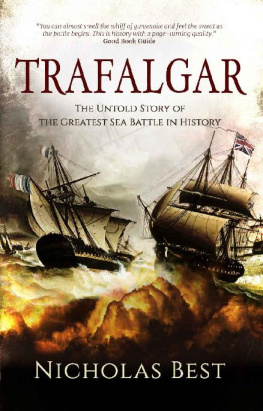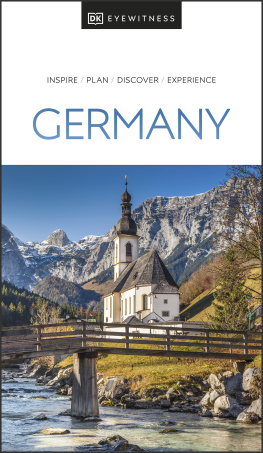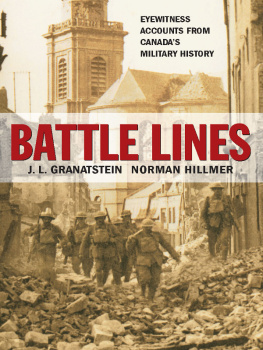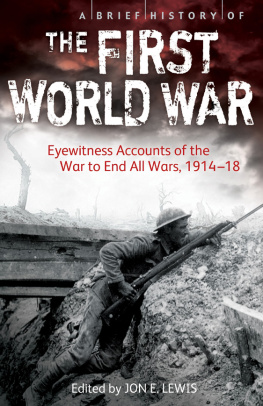Nicholas Best - Five Days That Shocked the World: Eyewitness Accounts from Europe at the End of World War II
Here you can read online Nicholas Best - Five Days That Shocked the World: Eyewitness Accounts from Europe at the End of World War II full text of the book (entire story) in english for free. Download pdf and epub, get meaning, cover and reviews about this ebook. year: 2012, publisher: St. Martins Press, genre: Detective and thriller. Description of the work, (preface) as well as reviews are available. Best literature library LitArk.com created for fans of good reading and offers a wide selection of genres:
Romance novel
Science fiction
Adventure
Detective
Science
History
Home and family
Prose
Art
Politics
Computer
Non-fiction
Religion
Business
Children
Humor
Choose a favorite category and find really read worthwhile books. Enjoy immersion in the world of imagination, feel the emotions of the characters or learn something new for yourself, make an fascinating discovery.

- Book:Five Days That Shocked the World: Eyewitness Accounts from Europe at the End of World War II
- Author:
- Publisher:St. Martins Press
- Genre:
- Year:2012
- Rating:3 / 5
- Favourites:Add to favourites
- Your mark:
- 60
- 1
- 2
- 3
- 4
- 5
Five Days That Shocked the World: Eyewitness Accounts from Europe at the End of World War II: summary, description and annotation
We offer to read an annotation, description, summary or preface (depends on what the author of the book "Five Days That Shocked the World: Eyewitness Accounts from Europe at the End of World War II" wrote himself). If you haven't found the necessary information about the book — write in the comments, we will try to find it.
Nicholas Best: author's other books
Who wrote Five Days That Shocked the World: Eyewitness Accounts from Europe at the End of World War II? Find out the surname, the name of the author of the book and a list of all author's works by series.
Five Days That Shocked the World: Eyewitness Accounts from Europe at the End of World War II — read online for free the complete book (whole text) full work
Below is the text of the book, divided by pages. System saving the place of the last page read, allows you to conveniently read the book "Five Days That Shocked the World: Eyewitness Accounts from Europe at the End of World War II" online for free, without having to search again every time where you left off. Put a bookmark, and you can go to the page where you finished reading at any time.
Font size:
Interval:
Bookmark:

INTRODUCTION
FEW EPISODES IN HISTORY can have shocked the world more than the five days at the end of April 1945 that began with the murder of Mussolini and ended with the news that Hitler had killed himself at his bunker in Berlin. The departure of both dictators had long been expected, but the manner of their going was no less awful for that: Mussolini and his mistress dangling upside down in front of a jeering mob, Hitlers body reduced to a Wagnerian pile of ashes while Magda Gbbels poisoned her children and demented staff at the Chancellery enjoyed group sex before going to their own deaths. Not even the most operatic of novelists could have made it up.
Equally horrifying were the atrocities being committed by the Russians at the same time as they stormed across Germany. The atrocities were at their worst in Berlin, where mass rape on an unprecedented scale was taking place as the Russians surrounded the capital. That their own menfolk had behaved just as badly in Russia was no consolation to the German women of all ages who fled in terror, often committing suicide to avoid gang rape by troops from the Soviet republics with little experience of such Western niceties as electricity or indoor plumbing. Horrifying, too, were the revelations from the concentration camps that were beginning to emerge with the deaths of Hitler and Mussolini. Dachau was captured by the Americans on the same day as Il Duce was strung up in Milan. Ravensbrck fell a day later, just as Hitler was taking his own life. The first photographs from Belsen and Buchenwald had been released that week and were being shown to an incredulous public. Most were too awful to be published in newspapers. They were being exhibited in towns and cities instead, so that people across the free world could see the evidence with their own eyes and understand exactly what had been going on in Nazi Germany.
It was important that people should see the photographs with their own eyes. They had all read the newspapers and heard the rumors about the camps, but they didnt necessarily believe them. Radio reporter Richard Dimbleby, a man of unimpeachable integrity, had had great difficulty persuading a dubious BBC to broadcast his first eyewitness report from Belsen. Others, too, had been disbelieved when they spelled out what they had seen. During World War I, it had been widely rumored that the Germans on the Western Front were melting down human bodies for fat. The rumors had later turned out to be false, almost certainly the work of British propaganda. Now the rumors had surfaced again, with additional tales of mass gassings, living skeletons, shrunken heads, and lampshades made of tattooed skin. Small wonder that people were skeptical.
Indeed, the London cinema showing the first film from the camps was picketed that week by an angry crowd, outraged that their own government was lying to them again. Their anger was shared by millions of Germans, well aware that bad things had happened in the camps, yet convinced that the atrocities had been grossly exaggerated by Allied propaganda in order to justify the war.
But the photographs didnt lie. Seeing Is Believing was the title of the exhibition sponsored by the Daily Express in London that week. People queued in thousands to see the Buchenwald pictures, and came away speechless. Later, they saw the Belsen film in the cinema: skeletons bulldozed into burial pits, and German civilians standing beside the SS at the graveside, all of it filmed in one take, so that there could be no accusations of trick photography. The photos didnt lie. There were too many of them, from too many different places, supported by too many eyewitness accounts for the stories to be lies. It simply wasnt possible.
Is there any need for another book on an already well documented week, no matter how shocking it was? The answer has to be yes if the material is new or pleasingly unfamiliar. Everyone knows, for instance, that Hitler was in Berlin when he died, but how many know that his sister was at Berchtesgaden, living anonymously as Frau Wolff and keeping her own counsel as the other guests in her boarding house discussed her brothers death? Or that Leni Riefenstahl, Hitlers favorite film director, was in an Austrian ski resort, unable to find a bed for the night when people learned who she was? Or that the future Pope Benedict had deserted from the Wehrmacht and was walking home, terrified that he might still be shot or hanged from a tree for dereliction of duty?
Audrey Hepburn was in Holland, delighted to avoid conscription into a Wehrmacht brothel, but so malnourished that her ambition to become a ballet dancer was looking increasingly unrealistic. Eleven-year-old Roman Polanski was living virtually feral on the streets of Krakow. Bob Dole, badly wounded by a German shell, was lying paralyzed in an Italian hospital, listening to the cheers for the end of the war in Italy and wondering if he would ever be able to move his toes again. All sorts of people, some famous at the time, others to become famous later, remembered exactly where they were and what they were doing as the events of those extraordinary five days unfolded around them.
As in my previous book, The Greatest Day in History , about the Armistice of 1918, I have set out to tell the story through the eyes of the people who were there, preferably well known or interesting people, but ones not normally associated with the events being described. Using their own words wherever possible, I have covered all the core events of that week as Hitler killed himself and the Nazis scattered, but I have also wondered where Marlene Dietrich was at the time, and Gnter Grass, Henry Kissinger, Jack Kennedy, and a host of others. The technique worked well for the Armistice, providing a snapshot of the whole world at the end of one of the most astonishing weeks in history. I hope it works again here.
A word of warning. The definitive truth has not always been easy to discover. Quite a few eyewitnesses, particularly in Hitlers bunker, changed their stories in later years and gave differing and often contradictory accounts of the same events. Others kept silent for decades and then had trouble remembering dates and facts correctly. I have always envied authors who feel able to state with certainty that a particular eyewitness was either wrong or lying. For myself, I prefer to report what the witnesses said, putting it in context where necessary, and then leave it to readers to make up their own minds. But I can say with certainty that what follows, or something very like it, definitely happened.
* * *
WARM THANKS to Senator Bob Dole and Lord Carrington for their contributions to this book. Also to Peter Devitt, assistant curator of the RAF museum at Hendon, who helped me find out more about Operation Manna; Katharine Thomson of the Churchill Archives Centre at Churchill College, Cambridge; and Alec Holmes, whose surgical knowledge enabled me to make sense of Mussolinis autopsy. Thanks, too, to Andrew Lownie, my agent, and Rob Kirkpatrick, Nicole Sohl, and Margaret Smith of Thomas Dunne Books in New York. From seventeen floors up, Rob edited a British author with skill and tact, which takes some doing!
Finally, an apology to President Jimmy Carter for my failure to find an appropriate context for his generous contribution. For the record, he says he was at sea with the U.S. Navy when Hitler died, wishing he could be in Times Square in time to join the celebrations when the war ended. To my great regret, I couldnt find a suitable place to mention it in the book.
CONTENTS
Mussolini and his mistress dragged from their beds; Rachele Mussolini terrified for her children; Mussolini shot at Lake Como
Next pageFont size:
Interval:
Bookmark:
Similar books «Five Days That Shocked the World: Eyewitness Accounts from Europe at the End of World War II»
Look at similar books to Five Days That Shocked the World: Eyewitness Accounts from Europe at the End of World War II. We have selected literature similar in name and meaning in the hope of providing readers with more options to find new, interesting, not yet read works.
Discussion, reviews of the book Five Days That Shocked the World: Eyewitness Accounts from Europe at the End of World War II and just readers' own opinions. Leave your comments, write what you think about the work, its meaning or the main characters. Specify what exactly you liked and what you didn't like, and why you think so.








